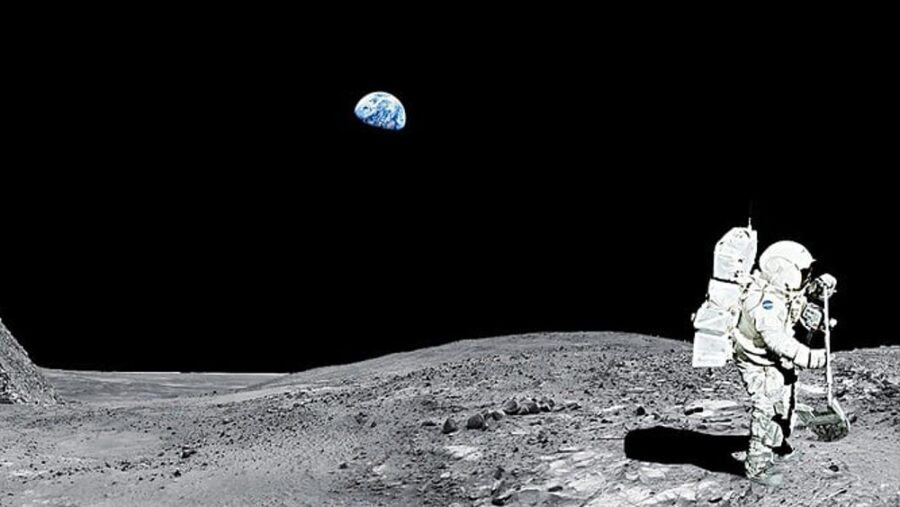Scientists Find Source Of Earthquakes On Moon In Last Place Anyone Expects

According to a recent write-up in Gizmodo, scientists are now questioning whether a series of earthquakes across the moon were caused by natural processes. These ‘moonquakes’ as they have been called were previously thought to be the result of shifting plates brought on by varying temperatures within the lunar environment, though new studies have revealed the quakes to be caused by human interaction with the moon’s surface.
The Apollo 17 lander, which was used to measure these seismic waves, was itself responsible for causing them, leading scientists to revisit their data.
Some of the seismic activity on the moon turns out to have been from man-made landers, and not the lunar surface.
Though moonquakes are often a result of a temperature imbalance, they can also be caused by mysterious tremors within the satellite’s crust, which some scientists claim could have been a frequent occurrence for a time during the moon’s formation.
The specific quakes being monitored occurred in 1972 when NASA astronauts placed seismometers on the moon as part of their Apollo 17 mission. The Apollo 17 sensors placed on the surface collected data from the moon’s outer crust from October 1976 until May 1977, providing scientists with hordes of data to sift through.
With the use of new technology such as machine learning, modern NASA scientists have taken to reanalyzing the data in search of answers regarding the nature of moonquakes during the time. If their data is correct, the team may have discovered a brand new kind of seismic activity on the moon’s surface, taking place at the same exact time as the Apollo 17 mission’s landing. This information seems to line up appropriately with timeline data regarding the nature of normal run-of-the-mill moonquakes from that era.
In a confounding paradox, researching the Moon’s seismic activity requires being on the surface, but that then results in artificial activity.
Moonquakes are often the result of the sun’s intense heat refracting off the moon’s surface, raising lunar temps from a range of -208 degrees Fahrenheit to 250 degrees Fahrenheit. This drastic change results in the surface expanding and contracting, causing it to shake and crack with general regularity. The sensors detected by the Apollo 17 mission, on the other hand, were not a result of the moon itself but of outside activity from the lander.

This means good news for NASA scientists, as the study of moonquakes can support the future design of lunar landers, allowing the team to make necessary tweaks to prevent any data from being corrupted by human intervention.
Future landers will also be fitted with a number of devices to measure and study the thermal expansion and contraction of the moon’s surface, allowing us to better understand the origin and frequency of moonquakes in the near future. This information also coincides with recent seismic readings, which suggest more moonquakes corresponding to the recent Chandrayaan-3 spacecraft, which India landed on the Moon’s South Pole.
Moonquakes are often the result of the sun’s intense heat refracting off the moon’s surface, raising lunar temps from a range of -208 degrees Fahrenheit to 250 degrees Fahrenheit.
One researcher pouring through the data, Geophysics professor Allen Husker, believes the next step in this process calls for placing a number of large seismometers on the moon’s dark side. Husker’s hypothesis suggests that the lunar satellite’s permanently shadowed portion allows for ice water reservoirs just beneath the surface, which are never warmed by the sun’s light.
If this is true, the seismic waves that travel through the undercurrent will provide us with a host of new data to better understand the moon and its mysterious origins.












